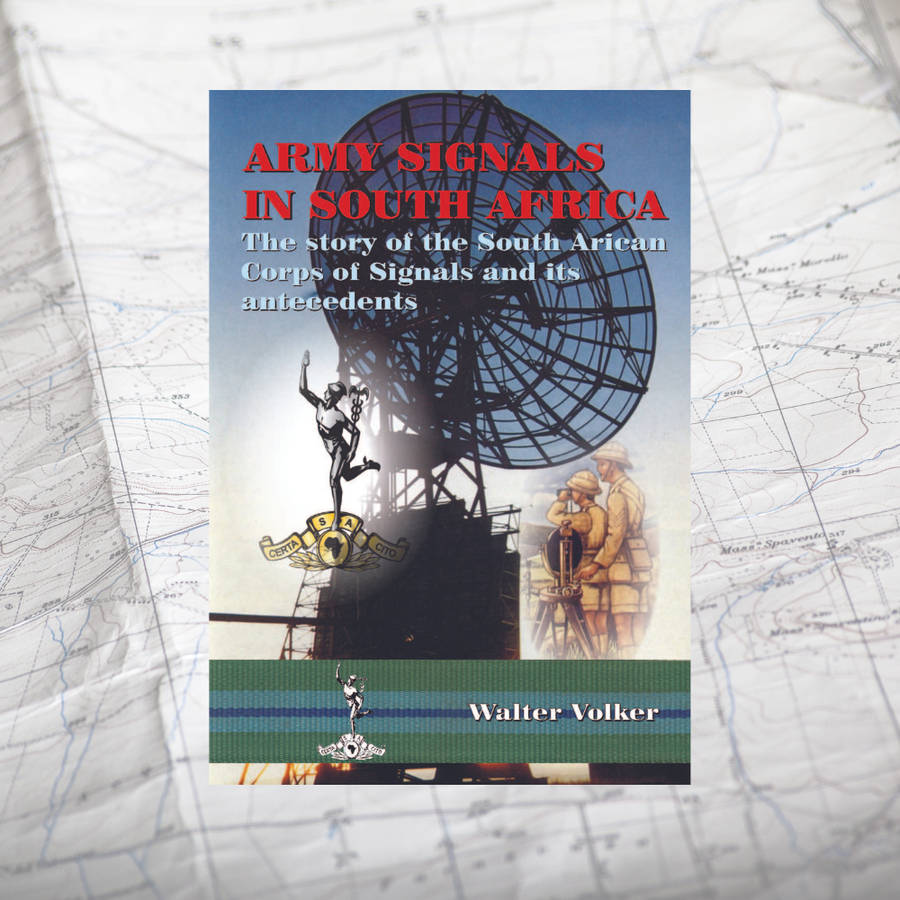
Army Signals in South Africa: The Story of the South African Corps of Signals and Its Antecedents...
Check my rate
| Main centres: | 1-3 business days |
| Regional areas: | 3-4 business days |
| Remote areas: | 3-5 business days |

| Main centres: | 1-3 business days |
| Regional areas: | 3-4 business days |
| Remote areas: | 3-5 business days |
TABLE OF CONTENTS
PART I: BACKGROUND AND EARLY HISTORY
1. Early Roots
2. Early British Signals
3. Early Signals in South Africa (1652 1880)
PART II: SA Signals during the Anglo-Boer Wars (1880 -1881 and 1899 1902)
4. Field Telegraphy in the South African Republic (ZAR)
5. Field Telegraphy in the OFS Republic State Artillery
6. British Signals during the Anglo-Boer War (1899-1902)
PART III: REORGANISATION AND UNIFICATION
7. Post-War Consolidation and Reorganisation
8. The Bhambatha Rebellion
9. Reorganisation and Unification
10. Establishment of the Union Defence Force (UDF) in 1912
PART IV: SA Signals during World War I (1914 1918)
11. The Campaign in German South West Africa
12. Confusion in German East Africa
13. The Signals in Europe
PART V: SA Signals between the Wars (1919 1939)
14. Motivation for a Signals Corps
15. Procurement of new Technical Equipment
16. A Signals Corps becomes a necessity
17. The Establishment of the South African Corps of Signals (SACS) in 1923
18. Inadequate Equipment
19. Problems with Establishment Tables are Resolved
20. The SACS liaises with the Outside World
21. Signals Equipment and Other Problems
22. The Radio Reserve of the UDF
23. Reorganisation of the UDF and SACS
24. Reorganisation of the SACS and early Training (1937-1940)
PART VI: SA Signals during World War II (1939 1945)
25. Signal Units in South Africa during World War II
26. The Development of Radar and the SSS
27. The Signals in East Africa
28. The War in the Desert
29. The Signals in Madagascar
30. 6 South African Armoured Division in Italy
PART VII: THE SACS DURING THE IMMEDIATE POST-WAR PERIOD FROM 1946 TO 1967
31. Demobilisation and Reorganisation (1946 to 1956)
32. Major Political Changes in 1948
33. Draft System introduced in 1953
34. Consolidation 1957 to 1959
35. The end of the Union Defence Force (UDF) (1912 1958) and the Establishment of the SA Defence Force (SADF) in 1958
36. Becoming a Republic in 1961
37. Permanent Force Units established in 1962 11 Signals Squadron
38. Additional Citizen Force Units established: 1964 to 1967
39. The Republic Celebrates 5 Year Anniversary in 1966 11 Signals Squadron contribution
40. The Post of Secretary of Defence abolished in 1967
41. National Service system adopted in 1967
42. Prelude to Insurgency 1957 to 1967 Radio Freedom
43. The Role of Command Signal Squadrons/ Units
Part VIII: THE SACS IN THE "BORDER WAR" (1966 to 1989) and "STRUGGLE" PERIOD TO 1993
44. The start of the SWA Border War and Insurgency into South Africa
45. Development of an own Strategic and Tactical EW capability initiated in 1968
46. Development of HF and VHF Tactical Radios initiated in 1968
47. Establishment of 1 Signal Regiment in 1969
48. Republic Day 10 Year in 1971 1 Signal Regiment contribution
49. Rationalisation of Signal Unit Identification Numbers in 1971
50. Development of Static Command and Control Telecommunications Systems initiated in 1972 Project Ebbehout
51. Establishment of 2 Signal Regiment, 3 Electronic Workshop and 4 Electronic Workshop in 1972
52. Golden Jubilee and the First and Only Brigade Parade of the SACS in 1973
53. Movement of the School of Signals and 1 Signal Regiment to Heidelberg in 1973
54. Adoption of the Army Gymnasium in 1973
55. The SADF takes over SAP Tasks in 1 Military Area, SWA in 1973
56. Development of a Mobile Command and Control Telecommunications Systems capability initiated in 1974 Project Netor
57. Establishment of 1 SA Corps (7 Div and 8 Div) and their Signal Units in 1974
58. Establishment of the unconventional forces Commands and their Signal Units in 1974
59. Development of the MARNET System for the Commandos in 1974
60. Establishment of Staff Departments Personnel, Intelligence and Logistics in 1975
61. National Service extended from 12 to 24 months in 1978
62. State Security Council (SSC) and Chief of Finance established in 1978
63. The Army Battle School established in 1978
64. The SAMS established as the Fourth Defence Force arm in 1979
65. The Laingsburg Flood and 20th Republic Day Celebrations in 1981
66. The Move to the Wonderboom Military Base in 1981
67. Establishment of 5 Signal Regiment in 1981
68. Establishment of the Signal Formation in 1982
69. Reorganisation of the Commands in 1983
70. Reorganisation of the Conventional Forces in 1983
71. Signing of the Nkomati Accord in 1984
72. Regional Conflict: The Contribution of the SACS during Border War Operations from 1966 to 1989
73. Peace Negotiations leading to the Independence for SWA/ Namibia and the end of the Border War 1988 to 1990
74. Other Cross-Border Operations in Neighbouring and Frontline States
75. ...